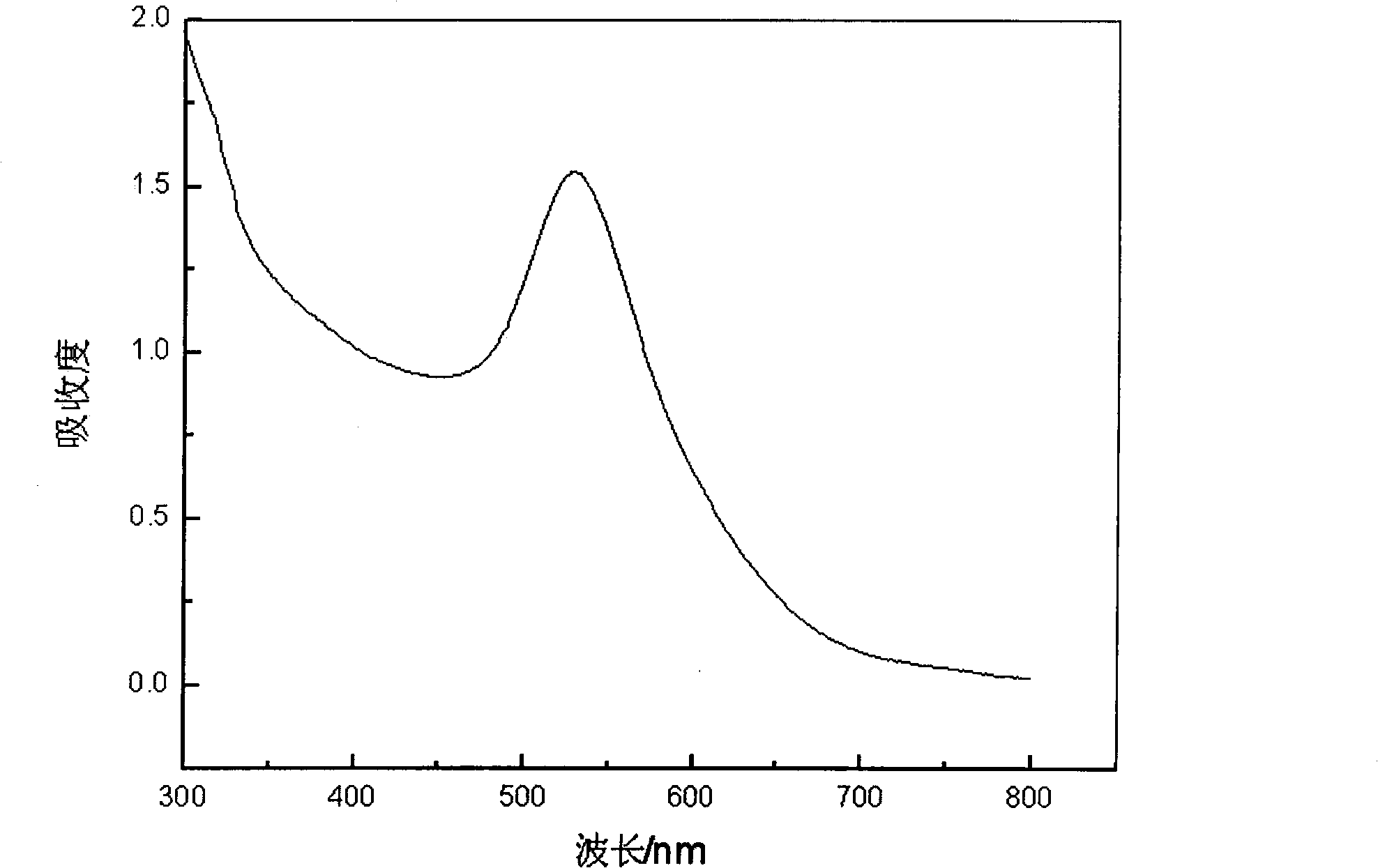Preparation method of heparin modified gold nano-particles
A technology of gold nanoparticles and heparin, applied in the field of nanodiagnosis, can solve the problems of strong binding force, single structure, insufficient research on gold nanoparticles, etc., and achieve the effect of low cost and good stability
- Summary
- Abstract
- Description
- Claims
- Application Information
AI Technical Summary
Problems solved by technology
Method used
Image
Examples
Embodiment 1
[0017] Example 1: Preparation of low molecular weight heparin whose reducing end is an aldehyde group
[0018] 1:1~1:20 of 0.5M H 2 SO 4 and 5.5M NaNO 2 The solution was made up to 5mlHNO 2 solution, then add 1g of heparin, mix well, react at 0-10°C for 0.5-4 hours, shake the solution every 5-10 seconds during the reaction, after the reaction, use 3ml 1:1:1~ 1:10:10 of 1M Na 2 CO 3 、H 2 O, 1M NaHCO 3 neutralize the mixed solution, adjust the pH to 7, and use 500ml-1000ml of 50mM NH 4 HCO 3 The solution was dialyzed three times and freeze-dried to obtain a low molecular weight heparin whose reducing end was an aldehyde group.
Embodiment 2
[0019] Embodiment 2: Preparation of low molecular weight heparin with sulfhydryl group
[0020] 1g of low-molecular-weight heparin whose reducing end is an aldehyde group is dissolved in 10-100ml of 0.2M phosphate buffer (pH7.0), and then 10ml of 0.1-1M mercaptoethylamine solution is added. After stirring evenly, add 1-2g The sodium cyanoborohydride catalyst is reacted at a temperature of 55-65°C for 2-10 hours. After the reaction, the solution is centrifuged, and the supernatant is dialyzed and then freeze-dried to obtain a low molecular weight heparin sample with mercapto groups.
Embodiment 3
[0021] Embodiment 3: Preparation of low molecular weight heparin with sulfhydryl group
[0022] 1g of low-molecular-weight heparin whose reducing end is an aldehyde group is dissolved in 10-100ml of 0.2M phosphate buffer (pH7.0), and then 10ml of 0.1-1M p-mercaptoaniline solution is added. After stirring evenly, add 1-2g The sodium cyanoborohydride catalyst is reacted at a temperature of 55-65°C for 2-10 hours. After the reaction, the solution is centrifuged, and the supernatant is dialyzed and then freeze-dried to obtain a low molecular weight heparin sample with mercapto groups.
PUM
 Login to View More
Login to View More Abstract
Description
Claims
Application Information
 Login to View More
Login to View More - R&D
- Intellectual Property
- Life Sciences
- Materials
- Tech Scout
- Unparalleled Data Quality
- Higher Quality Content
- 60% Fewer Hallucinations
Browse by: Latest US Patents, China's latest patents, Technical Efficacy Thesaurus, Application Domain, Technology Topic, Popular Technical Reports.
© 2025 PatSnap. All rights reserved.Legal|Privacy policy|Modern Slavery Act Transparency Statement|Sitemap|About US| Contact US: help@patsnap.com


